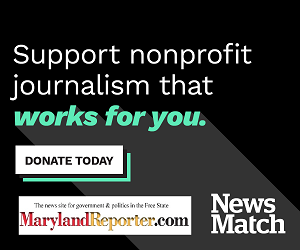Technology is changing how we deliver care in communities. Mobile apps, online records, and real-time data tools have made reaching people quickly and efficiently easier. But making the most of these tools takes more than just downloading software. It requires proper planning, training, and a focus on what communities actually need.
For technology to truly make a difference, it must work hand in hand with human connection. This is especially important in areas with fewer resources or limited digital access. The goal isn’t just to use more tech—it’s to use it better. The following tips offer practical ways for public health teams to close the gap between modern tools and meaningful care for all.
1. Build Systems That People Can Actually Use
If a system is too complex, it won’t be used. Many digital programs fail because they aren’t built with users in mind. Community members and local staff need clear, simple, and easy access tools. Designing systems with real feedback from users helps improve engagement. Listening to what people need and testing ideas early makes a big difference in how successful a long-term digital tool will be.
2. Adapt to Technological Advancements
New tools, systems, and platforms are constantly being introduced in public service. Adapting to these changes is no longer optional—it’s a must. Whether it’s managing patient data, supporting remote care, or analyzing trends in real time, public health workers need to be comfortable with how technology is shaping the field. Staying current helps improve service and reach more people effectively. Programs like MPH health informatics prepare professionals to work at the intersection of technology and care. Programs like these teach students how to use digital tools to solve real-world challenges in community health. It’s designed for those who want to lead change and apply data-driven solutions to improve outcomes at the local and national levels.
3. Promote Digital Literacy Within Communities
Some people are still new to using apps, websites, or patient portals. Without support, even the best tools won’t reach the people who need them most. Teaching digital skills can open the door to better care and communication. Free classes, printed guides, and language options can help more people feel confident using digital health tools. When more people understand the tech, public programs can reach further and work better for everyone.
4. Use Data Responsibly and Transparently
Data can help spot trends and needs, but it must be handled with care. People are more likely to trust systems if they know their personal information is safe and not being shared without their consent. Public health teams should be clear about how data is used. Strong privacy protections and open communication build trust and encourage people to take part in digital programs and services.
5. Leverage Mobile Technology for Underserved Areas
Many people rely on their phones as their main device. Mobile-friendly tools are a great way to reach those in rural or low-access areas who may not have a computer at home. Text messages, mobile apps, and alerts can all help share useful info and services. Making digital tools mobile-first helps remove barriers and brings care to more people, wherever they are.
6. Train Public Health Professionals in Tech Collaboration
Working with technology doesn’t mean you have to be a developer. But it does mean being able to work closely with people who are. Public health professionals should know how to communicate needs clearly and understand what tech can and can’t do. Cross-training can help teams work better together. It ensures that the people planning services and the people building them are on the same page, which leads to stronger, more useful systems for the community.
7. Personalize Community Outreach Efforts
Every community has its own set of needs. With the right tools, outreach efforts can be more targeted and relevant. Sending the same message to everyone doesn’t always work. Tech allows teams to send reminders, tips, or updates based on age, location, or past needs. This makes communication more effective and respectful. When people feel that a service is speaking directly to them, they’re more likely to respond.
8. Monitor What’s Working—and What’s Not
One of the benefits of using digital tools is the ability to track progress. But collecting data isn’t enough—you have to actually use it. Regular check-ins help make sure things are on the right path. Looking at what’s working helps grow success. Just as important, noticing what’s not working early can prevent wasted time and money. Flexibility and ongoing learning make digital programs more effective in the long run.
9. Keep Human Connection at the Center
Technology should support people, not replace them. Digital tools can help with speed and reach, but they should never push out personal connection or empathy. In community work, relationships are key. It’s important to use technology in ways that feel human. Video calls, personal messages, and follow-ups can keep that connection strong. A program that combines tools and trust is more likely to have a lasting impact.
10. Stay Curious and Keep Learning
Things move fast in both public service and technology. What works today might be outdated in a few years. Staying open to new tools and ideas is part of staying effective. Joining webinars, taking short courses, or reading up on new trends can help you stay ahead. The more you learn, the more you can bring to your work. Continuous growth supports stronger teams and stronger outcomes for the people you serve.
Technology offers new ways to improve care and outreach, but success depends on how well it’s matched with the community’s real needs. It’s not just about having tools—it’s about using them with purpose, planning, and care. By keeping people at the center and making systems simple and accessible, it’s possible to close the gap between innovation and impact. Professionals can create programs that support progress, trust, and wellness across all communities with thoughtful steps.







Recent Comments